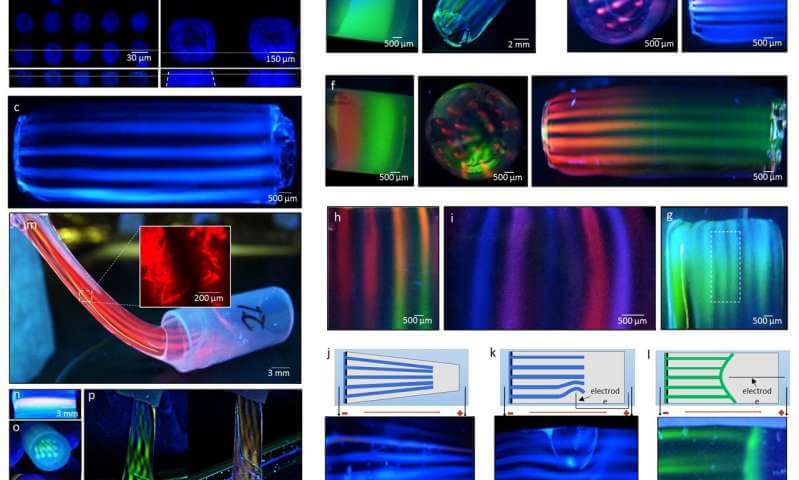Scientists have developed an easy and affordable way to print biological environments without losing their chemical complexities.
Biomedical engineering and the molecular sciences are among the many industries making use of 3D printing in order to find new ways to target drugs or develop human tissues and organs. Although a variety of 3D hydrogel systems have been developed, there are still limitations when it comes to developing more complex biological structures that include a controlled biochemical anisotropy.
Now, a research team at Queen Mary University of London (QMUL) has created a unique 3D-Electrophoresis-Assisted-Lithography (3DEAL) platform which enables scientists to print 3D molecular patterns using hydrogels. This opens the door to the development of more complex biological environments.
3DEAL is an easy-to-use and inexpensive technique to create more complex molecular patterns such as molecular gradients using hydrogels. This way, 3D hydrogel environments can be developed and retain their spatial control of chemical composition and functional patterns.
It is based on the principles of native polyacrylamide gel electrophoresis (NPAGE) – a widely used molecular technique to analyze proteins.
Fluorescent protein patterns with 3D hydrogels. (Image: QMUL)
3DEAL offers improve robustness and lower costs for 3D molecular printing
The 3DEAL incorporates an electrical field as well as a porous mask that is used to localize molecules in the hydrogel regardless of their charge and size. The researchers then went on to demonstrate the technique by creating complex molecular patterns from native proteins.
Professor Alvaro Mata, the lead researcher of the project at Queen Mary’s School of Engineering and Materials Science, explained the potential uses for their 3D molecular printing process:
“The human body is largely made up of anisotropic, hierarchical, and mostly three-dimensional structures. New ways to fabricate environments that can recreate physical and chemical features of such structures would have important implications in the way more efficient drugs are developed or more functional tissue and organ constructs can be engineered.”
Other techniques such as stereolithography or photo-activated bioorthogonal reactions have been able to pattern proteins with hydrogels. However, such techniques require hydrogels with very specific optical properties and are limited in terms of depth of printing. In comparison, the 3DEAL technique allows for high-aspect ratio patterns. It can also be modified to print and pattern molecules.
Some of the main advantages of the technique include its robustness, ease of use, cost effectiveness, as well as versatility to be used with various hydrogels and molecule types.
The team plans to continue its research to assess more complex patterning and continue focusing on tissue engineering applications.
The research was funded by the ERC Starting Grant Strofunscaff and has been published in the journal Advanced Functional Materials.
Source: Advanced Functional Materials and Phys.org
Website: LINK


Schreibe einen Kommentar
Du musst angemeldet sein, um einen Kommentar abzugeben.